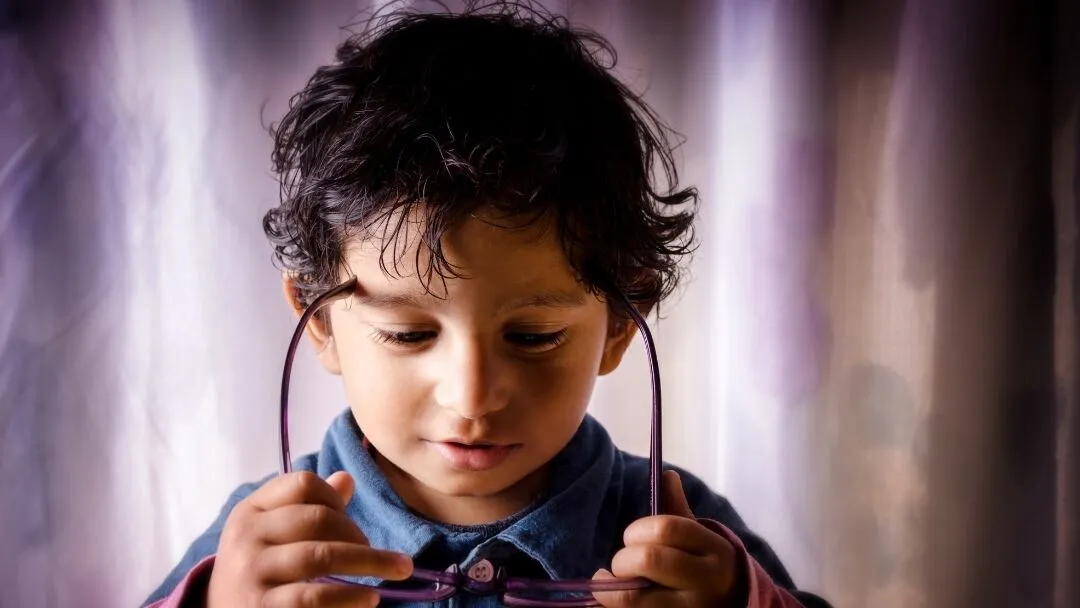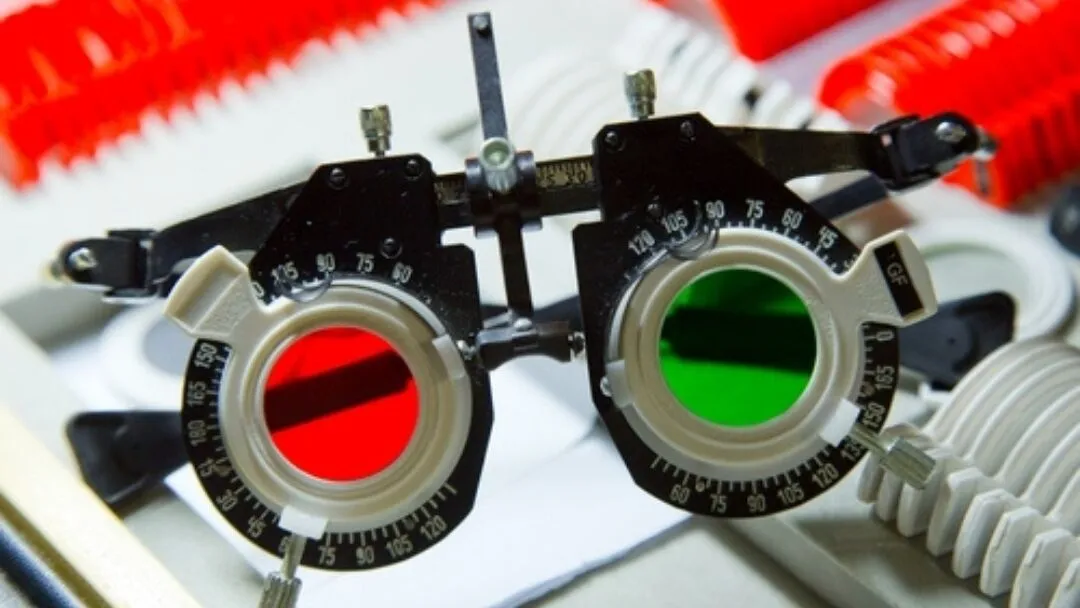In this blog post, Patricia S. Lemer explains why prism lenses can be powerful temporary tools for kids with autism, ADHD and LD because they alter neural processing of the brain.
What Are Prism Lenses?
The use of prism lenses for behavioral and learning problems goes back to the 1970’s when optometric pioneers began using these tools at the Gesell Institute. Prism lenses can be powerful temporary tools for individuals with autism and other developmental delays such as ADHD, Sensory Processing Disorder and learning disabilities because they alter neural processing of the brain, creating an unconscious change in posture or attention.
How Prism Lenses Are Prescribed
Counter to what many believe, lens prescribing is an art, not a science. While a machine might indicate one prescription, that prescription might make a patient dizzy or nauseous. Lenses are for particular purposes: to do a specific job, such as reading in the sun, or driving a truck in the rain at night. Unfortunately, for most people, one lens cannot solve both problems. Different prescriptions are thus necessary, depending upon the task.
Ophthalmologists use compensatory lenses to improve eyesight for specific purposes, such as those just described. Most people reading this post are wearing compensatory lenses.
Developmental optometrists, however, often use lenses not to correct eyesight, but rather therapeutically to correct vision. Some prescribe “learning lenses” or “training lenses” to give an individual with autism or other neurodevelopmental disorder a new point of view. These lenses may be used temporarily to give the brain a preview of what to expect, and eventually it can perceive differently without the lens. However, motor experiences are necessary for consolidation and permanent changes in perception.
How Prism Lenses Can Help
All lenses displace light. Single lenses address focal vision and help us see “What is it?” Ambient prism lenses operate on the “Where is it?” function. They deflect the light rays differently through a thin edge at the top and a thick edge at the base, influencing how the brain interprets where the body is in space.
Prisms are available in various magnitudes from “weak” to “strong,” which are measured in diopters. The optometrist can change a patient’s perception by altering both the magnitude and the direction of the prism.
About Patricia S. Lemer LPC MEd
Patricia S. Lemer is a licensed professional counselor, holding a Masters of Education in counseling and learning disabilities from Boston College and a Masters in Business from Johns Hopkins University. She practiced as an educational diagnostician for over 40 years.
She was a co-founder and served as Executive Director of the international non-profit organization Developmental Delay Resources (DDR). After DDR merged with Epidemic Answers, she became Chairman of the Board. When she retired from the board, she became an emeritus board member.

She is the author of three books, the most recent of which is Outsmarting Autism, Updated and Expanded: Build Healthy Foundations for Communication, Socialization, and Behavior at All Ages (North Atlantic Books, 2019).
Lemer wrote over 50 editorials for "New Developments," the quarterly newsletter of Developmental Delay Resources (DDR), from 1995 - 2009. When DDR wound down, she wrote an online blog, "After the Diagnosis, Then What?" from 2009-2017. Her articles and blogs have been updated and archived on the Epidemic Answers website.
Since 2019, Patricia Lemer has recorded a bimonthly podcast, "The Autism Detective." In these hour-long shows, she interviews parents and professionals about their experiences in maximizing the potential of individuals on the autism spectrum. Over 100 episodes are available on Spotify and other online platforms. To learn more, go to PatriciaLemer.com and OutsmartingAutism.com
Still Looking for Answers?
Visit the Documenting Hope Practitioner Directory to find a practitioner near you.
Join us inside our online membership community for parents, Healing Together, where you’ll find even more healing resources, expert guidance, and a community to support you every step of your child’s healing journey.
Sources & References
Bakroon, A., et al. Visual function in autism spectrum disorders: a critical review. Clin Exp Optom. 2016 Jul;99(4):297-308.
Bellato, A., et al. Association between ADHD and vision problems. A systematic review and meta-analysis. Mol Psychiatry. 2023 Jan;28(1):410-422.
Bertone, A., et al. Enhanced and diminished visuo-spatial information processing in autism depends on stimulus complexity. Brain. 2005 Oct;128(Pt 10):2430-41.
Chang, M.Y., et al. Prevalence of Ophthalmologic Diagnoses in Children With Autism Spectrum Disorder Using the Optum Dataset: APopulation-Based Study. Am J Ophthalmol. 2021 Jan:221:147-153.
Davis, R.A.O., et al. Subjective perceptual distortions and visual dysfunction in children with autism. J Autism Dev Disord. 2006 Feb;36(2):199-210.
DeCarlo, D.K., et al. Prevalence of attention-deficit/hyperactivity disorder among children with vision impairment. J AAPOS. 2014 Feb;18(1):10-4.
De Jonge, M.V., et al. Visual information processing in high-functioning individuals with autism spectrum disorders and their parents. Neuropsychology. 2007 Jan;21(1):65-73.
Egset, K., et al. Magno App: Exploring Visual Processing in Adults with High and Low Reading Competence. Scandinavian Journal of Educational Research. 07 Jan 2020.
Franklin, A., et al. Reduced chromatic discrimination in children with autism spectrum disorders. Dev Sci. 2010 Jan 1;13(1):188-200.
Grigg. T.M., et al. Primitive Reflex Integration and Reading Achievement in the Classroom. Journal of Neurology and Experimental Neuroscience. 2023; 9(1), 18-26.
Ho, J.D., et al. Associations between attention-deficit/hyperactivity disorder and ocular abnormalities in children: a population-based study. Ophthalmic Epidemiol. 2020 Jun;27(3):194-199.
Kaplan, M., et al. Strabismus in Autism Spectrum Disorder. Focus on Autism and Other Developmental Disabilities. 1999.
Koh, H.C., et al. Spatial contrast sensitivity in adolescents with autism spectrum disorders. J Autism Dev Disord. 2010 Aug;40(8):978-87.
Johnson, B.P., et al. Ocular motor disturbances in autism spectrum disorders: systematic review and comprehensive meta-analysis. Neurosci Biobehav Rev. 2016 Oct:69:260-79.
Khanna, R.K., et al. Ophthalmological findings in children with autism spectrum disorder. Graefes Arch Clin Exp Ophthalmol. 2020 Apr;258(4):909-916.
Little, J.A. Vision in children with autism spectrum disorder: a critical review. Clin Exp Optom. 2018 Jul;101(4):504-513.
Maron, D.N., et al. Oculomotor deficits in attention deficit hyperactivity disorder (ADHD): a systematic review and comprehensive meta-analysis. J Autism Dev Disord. 2006 Feb;36(2):199-210.
Milne, E., et al. Vision in children and adolescents with autistic spectrum disorder: evidence for reduced convergence. J Autism Dev Disord. 2009 Jul;39(7):965-75.
Mouridsen, S.E., et al. Eye Disorders among Adult People Diagnosed with Infantile Autism in Childhood: A Longitudinal Case Control Study. Ophthalmic Epidemiol. 2017 Oct;24(5):332-335.
Padula, W.V., et al. Modifying postural adaptation following a CVA through prismatic shift of visuo-spatial egocenter. Brain Inj. 2009 Jun;23(6):566-76.
Padula, W.V., et al. Risk of fall (RoF) intervention by affecting visual egocenter through gait analysis and yoked prisms. NeuroRehabilitation. 2015;37(2):305-14.
Padula, W.V., et al. The consequence of spatial visual processing dysfunction caused by traumatic brain injury (TBI). Brain Inj.. 2017;31(5):589-600.
Padula, W.V., et al. Visual evoked potentials (VEP) evaluating treatment for post-trauma vision syndrome (PTVS) in patients with traumatic brain injuries (TBI). Brain Inj. 1994 Feb-Mar;8(2):125-33.
Perna, J., et al. Association between Autism Spectrum Disorder (ASD) and vision problems. A systematic review and meta-analysis. Mol Psychiatry. 2023 Dec;28(12):5011-5023.
Reimelt, C., et al. The underestimated role of refractive error (hyperopia, myopia, and astigmatism) and strabismus in children with ADHD. J Atten Disord. 2021 Jan;25(2):235-244.
Robertson, C.E., et al. Tunnel vision: sharper gradient of spatial attention in autism. J Neurosci. 2013 Apr 17;33(16):6776-81.
Sarno, S., et al. Electrophysiological correlates of visual impairments after traumatic brain injury. Vision Res. 2000;40(21):3029-38.
Simmons, D.R., et al. Vision in autism spectrum disorders. Vision Res. 2009 Nov;49(22):2705-39.
Stephens-Sarlós, E., et al. The efficacy of the sensorimotor training program on sensorimotor development, auditory and visual skills of schoolchildren aged 5–8 years. Child & Youth Care Forum. 2024 Aug;54(2):323-352.
Song, Y., et al. Can they see it? The functional field of view is narrower in individuals with autism spectrum disorder. PLoS One. 2015 Jul 23;10(7):e0133237.
Su, C.C., et al. Incidence and risk of attention-deficit hyperactivity disorder in children with amblyopia: a nationwide cohort study. Clin Exp Ophthalmol. 2019 Mar;47(2):259-264.
Van der Hallen, R., et al. Global Motion Perception in Autism Spectrum Disorder: A Meta-Analysis. J Autism Dev Disord. 2019 Dec;49(12):4901-4918.
Wang, J., et al. Refractive Status and Amblyopia Risk Factors in Chinese Children with Autism Spectrum Disorder. J Autism Dev Disord. 2018 May;48(5):1530-1536.
Whatham, A., et al. Vitamin and mineral deficiencies in the developed world and their effect on the eye and vision. Ophthalmic Physiol Opt. 2008 Jan;28(1):1-12.
Resources
Articles
CBS Chicago: Vision Problems In Kids Can Be Misdiagnosed For ADHD
Move, Play, Thrive: Vision Doctor on Rhythmic Movements + Research about Visual Processing Issues.
Books
Hellerstein, Lynn. 50 Tips to Improve Your Sports Performance. HiClear Publishing LLC, 2013.
Hellerstein, Lynn. Expand Your Vision Beyond Sight.HiClear Publishing LLC, 2012.
Hellerstein, Lynn. Organize It. HiClear Publishing LLC, 2010.
Hellerstein, Lynn. See It, Say It, Do It. HiClear Publishing LLC, 2012.
Lemer, Patricia S. Envisioning a Bright Future: Interventions That Work for Children and Adults with Autism Spectrum Disorders. Optometric Extension Program Foundation, 2008.
Videos
Catching a Ball for the First Time at 39: Justin’s Story
Vision Therapy Transformed Our Son’s Life: Atlas’ Story
Websites
Neuro-Optometric Rehabilitation Association
Optometric Vision Development Rehabilitation Association







